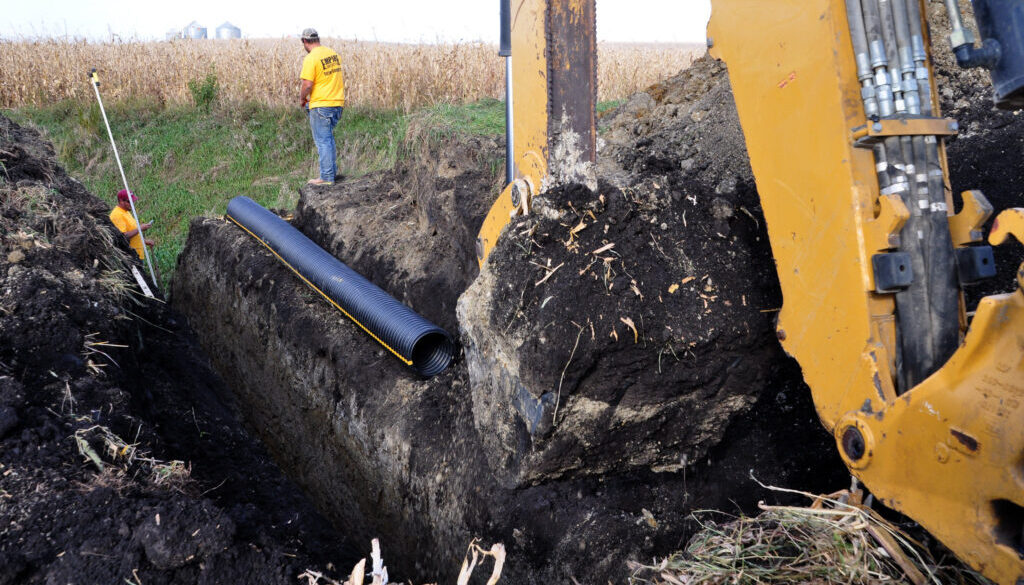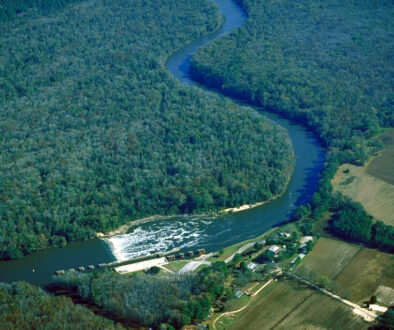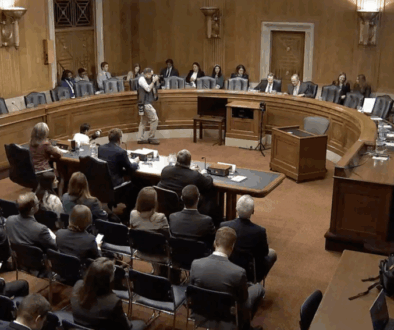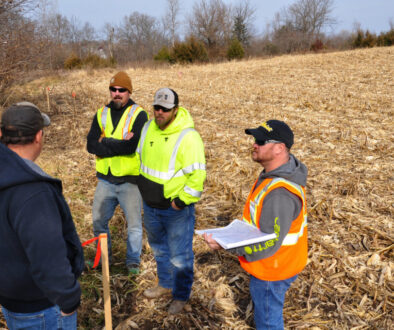Debra Shankland was a kid when the Cuyahoga River in Ohio caught fire in 1969.
“I saw the dead fish, I smelled it,” the retired biologist and environmental educator told a room of US Environmental Protection Agency (EPA) representatives on Wednesday.
Shankland was one of many speakers at the latest listening session led by the EPA as the agency crafts a new definition for the long controversial language “waters of the United States” contained in the Clean Water Act. The interpretation of that phrase, commonly shorthanded as WOTUS, can have massive implications for the health of small streams, remote wetlands, creeks and other waters.
The EPA, along with the Army Corps of Engineers, released a memo in March that narrowed the scope of what waters receive protection. The listening session this week is part of a larger public comment period on the agency actions to re-shape federal water regulation after years of confusion and debate.
The government is aiming to officially clarify and establish a “definition that is simple and durable and withstands the test of time,” EPA administrator Lee Zeldin said.

While Shankland urged the EPA to keep broad protections in place and pointed out the critical functions of wetlands, she was followed and preceded by several speakers from the coal and building industries that mirrored submitted public comments from agricultural representatives applauding the EPA’s moves. Such changes will remove uncertainty that has “plagued” industries for decades, Susan Asmus, senior vice president of regulatory affairs at the National Association of Home Builders, wrote in a public comment to the EPA.
Ted McKinney, CEO of the bipartisan National Association of State Departments of Agriculture, said in an interview that state regulators are in the best position to protect water, and reduced federal interference will be a boon to both farmers and water quality.
However, some tribes say narrowing Clean Water Act protections will further erode an already limited ability to protect their waters and would ignore geographic differences in water use and flow. And environmental and water advocates say it will lead to more pollution and flooding — at a time when the Trump administration is already cutting drinking water regulations.
“Removing a large number of both wetlands and streams from those basic protections will bring us back to a period of water insecurity that Americans have forgotten and probably do not want to relive,” Jim Murphy, director of legal advocacy for the National Wildlife Federation, said in an interview.
Clean Water Act controversy
The Clean Water Act, established in 1972, protects the “waters of the United States,” but doesn’t explicitly say what waterways are included in that protection. While there have been various legal opinions and challenges over the years, for decades — under both Republican and Democratic administrations — it was generally interpreted that all surface waters had protection. If someone wanted to dump pollutants into, build on, or divert water, they needed permission from the federal government to ensure it wouldn’t affect water quality or ecosystems.
“The Clean Water Act is probably one of the most successful and significant environmental laws that we have,” Murphy said. “It really turned around what was a crisis in water quality back in the late 60s and early 70s.”
Shankland attested to this in her comments to the EPA. After the Clean Water Act passage, she witnessed the turnaround of the Cuyahoga River and nearby Lake Erie. “Now you go down there, all along the river and Lake Erie … it’s an economic powerhouse,” she said.
“The Clean Water Act is probably one of the most successful and significant environmental laws that we have.” – Jim Murphy, National Wildlife Federation

Wetlands and out-of-the way streams are at the heart of the tug of war. After the first Trump administration significantly weakened clean water protections, the US Supreme Court weighed in via the Sackett v. EPA case saying the Clean Water Act covered streams, oceans, rivers, lakes but only “adjacent wetlands that are indistinguishable from those bodies of water due to a continuous surface connection.” This put many remote and seasonal streams, wetlands and other bodies of water outside the scope.
The Biden administration’s EPA adopted this interpretation in a broad way — with wetlands only needing a physical connection to a river, lake or ocean to fall under the Clean Water Act. The administration also interpreted the law through a regional lens — for example, what constitutes a “relatively permanent” body of water looks different in the arid Southwest compared to the humid Northeast. In response, 27 states joined lawsuits challenging the Biden administration.
“The feds were in what we called overreach mode,” McKinney said.
The March memo from the current Trump EPA and Army Corps scrapped the Biden guidelines, removing protections for wetlands that are connected to larger bodies of water via ditches, pipes and culverts.
“What they appear to want to do is to take the terms in the Sackett decision and give them the narrowest possible meaning,” Murphy said.
The action by the EPA is in line with calls from various industries who complain that broad interpretations of the WOTUS definition hurt their interests.
“It’s time to bring this issue in line with the Supreme Court Decision, Sackett v. EPA” and end “unnecessary burdens on landowners and local communities,” Wes Brooks, deputy assistant administrator for the EPA’s Office of Water, said at the opening of Wednesday’s listening session.
Pollution and flooding impacts
All lakes, rivers and larger bodies of water start somewhere — most often in small streams and wetlands. “Pollution flows downstream,” Murphy said.
“Nationwide about 50% of the flow in our mainstream rivers and larger lakes — a lot of which are direct sources of public drinking water — come from streams that are almost certainly no longer protected” if regulations are reduced, Murphy said.
Heavy farming states already struggle with impaired waters, mostly due to agricultural runoff. For example, roughly 56% of Iowa’s rivers and streams and more than 67% of its lakes are listed as impaired under the Clean Water Act, according to the most recent state data. The EPA forced the state last year to add seven additional rivers to its impaired list — all due to excess nitrate pollution, which largely comes from fertilizer and manure.
“It’s time to end … unnecessary burdens on landowners and local communities.” – Wes Brooks, EPA
Many of the impaired rivers — including segments of the Cedar River, Des Moines River, Iowa River, Raccoon River and South Skunk River — are drinking water sources and are contaminated with nitrates, which are linked to birth defects and cancers. In a separate federal fight over wetlands, an Iowa farm owner is challenging a US Department of Agriculture Farm Bill provision — called the “Swampbuster law” — that prohibits farmers from using designated wetlands on their property if they want to be eligible for crop insurance subsidies, farm loans and other federal benefits.
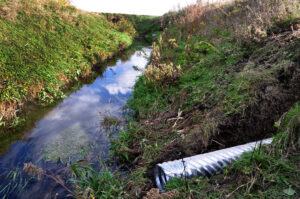
Stuart Swanson, president of the Iowa Corn Growers Association, wrote the EPA recommending that neither ditches nor farmland that has reverted to wetlands be covered under the Clean Water Act.
Swanson also recommended that ditches be excluded, in part, because they protect farms from flooding. However, a more narrow Clean Water Act could have the opposite effect: wetlands are sponges that hold more than one million gallons of floodwater per acre. If wetlands become paved over or drained that flood water could inundate communities, already dealing with an increase in severe flooding events due to a changing climate.
“For people not as concerned about the places where ducks and dragonflies and other things live, drinking water and flooding are probably two of the most immediate places that they will see impacts,” Murphy said.
Narrowing the Clean Water Act doesn’t necessarily mean more pollution, according to McKinney.
“The government closest to the people is the best form of government,” McKinney said, adding that about 40% of the National Association of State Departments of Agriculture members are Democrats and that bloc has “largely been leading the way with their frustration” over the Clean Water Act.
“The government closest to the people is the best form of government.” – Ted McKinney, National Association of State Departments of Agriculture
McKinney acknowledged that farm states like Iowa and Indiana (where he previously served as director of the state’s Department of Agriculture) have farm pollution issues but federal involvement isn’t solving it. “States and landowners have to step up,” he said.
Tribal protections
Tribes across the US have raised concerns about what a more narrow Clean Water Act definition would mean for their water and rights. Only 83 of the 574 federally recognized tribes are currently authorized to review federal permits and licenses under the Clean Water Act. Further restricting what qualifies as a protected water body would only further limit tribal involvement, Ken Norton, chair of the National Tribal Water Council and member of the Hoopa Valley Tribe, said in an interview.
“We already have tribes with no protection,” Norton said. “This is becoming more and more apparent under this [Trump] administration that is weakening the Endangered Species Act and other restrictions, promoting economic development adjacent to tribal lands.”
Tribes in dry, arid regions would be especially impacted, as part of the EPA’s apparent aim is to restrict protections for streams that only flow some times of the year, which are more common — and more vital — in drier Southwest regions. “Establishing a uniform flow number that is equally applicable to the arid western region, the Great Lakes region, and the New England forest would be scientifically inaccurate,” Norton and Tabitha Langston, chair of the National Tribal Caucus, wrote in a comment to the EPA.
Melissa Kay, a Tribal Water Institute Fellow with the Native American Rights Fund, said in an interview that tribal perspectives vary. Alaska, for example, is full of wetlands, which creates problems in building homes, creating housing insecurity among some tribes. However, in the Southwest, The Pueblo of Laguna Tribe relies on several rivers — the Rio San Jose, the Rio Puerco, Encinal Creek and the Rio Paguate — that are all fed by streams that are not running year-round, so could lose protection for these vital resources.
“A one-size-fits-all [approach] doesn’t account for historical differences and the differentiations across the different parts of the US,” Kay said.
Any Clean Water Act changes that impact other tribal resources such as fish, hunted game or culturally important plants could impact treaty rights — which are not negotiable.
“If tribes have treaty rights for some resource, what happens off the reservation still affects that resource, so the federal government is still under obligation to protect that,” Daniel Cordalis, an attorney with the Native American Rights Fund, said in an interview.
We “are not polluters”
Meanwhile many agricultural, mining, homebuilding and ranching groups say they want clarity from the Clean Water Act as well as a narrowing of its scope.
“The definition of WOTUS has changed multiple times over decades, and has led to significant regulatory uncertainty for family farmers and ranchers,” Rob Larew, president of the National Farmers Union, wrote in a comment to the EPA.
Larew said the Union supported “exemptions for normal agricultural activities” and “opposes broadening the definition of what waters are jurisdictional under the [Clean Water Act].”
Texas & Southwestern Cattle Raisers Association president Carl Ray Polk, Jr. wrote that their members “are not polluters.”
“Generations of ranching families have raised livestock and managed natural resources, often in dry, rugged regions where intermittent creeks and playas are a far cry from navigable waters,” Polk, Jr. wrote.
The next EPA listening session is May 19 for small businesses.
Featured image: Installation of a drainage water management system in Sac County, Iowa. (Credit: NRCS/SWCS photo by Lynn Betts)
